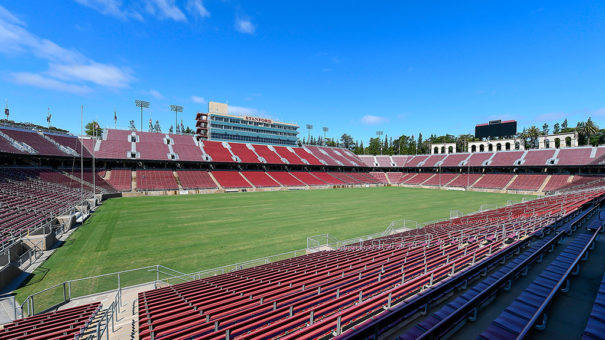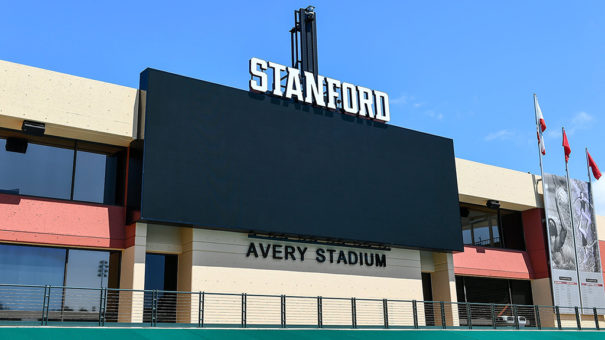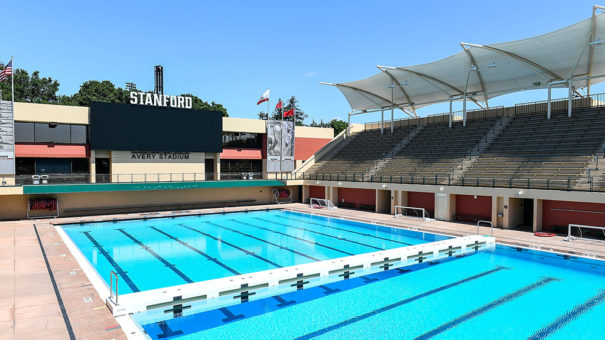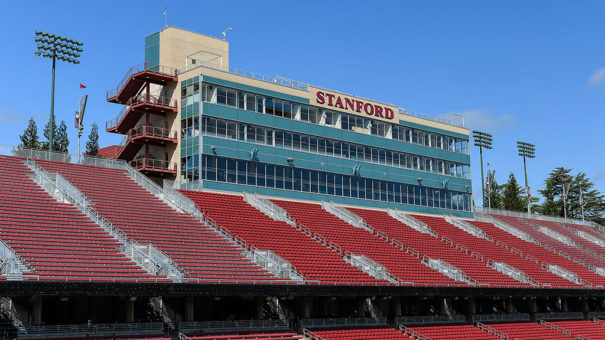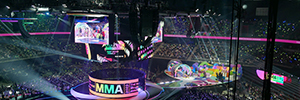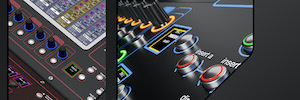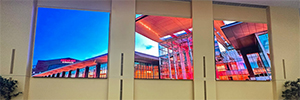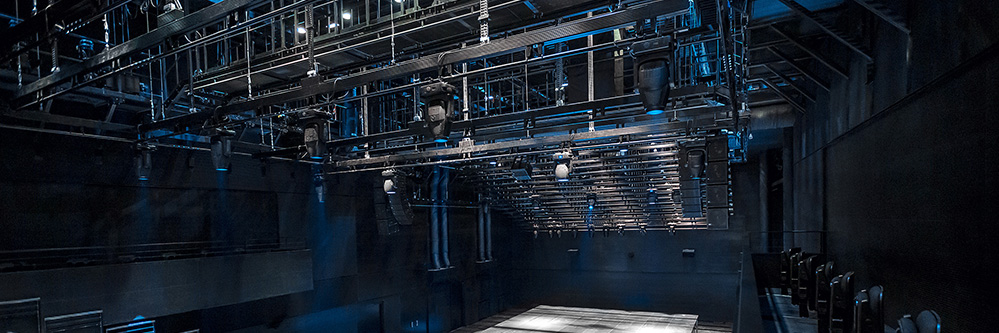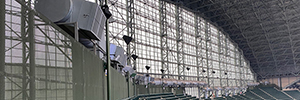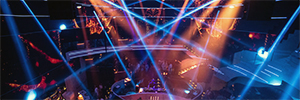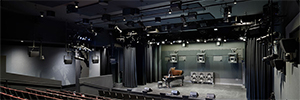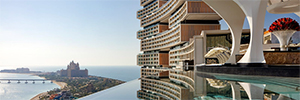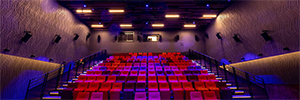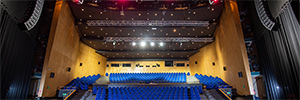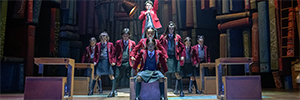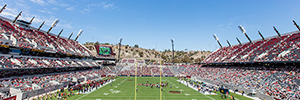Stanford University renews its sports centers with Meyer Sound
In a first phase, the facilities of Stanford Stadium have been updated, the Avery Aquatic Center and boyd and Jill Smith Family Stadium. A total of 85 CAL column speakers provide power and intelligibility in these enclosures.
the Stanford University, in California (Usa. USA), has completed the first phase of a major programme to improve sound reinforcement systems in its sports facilities.
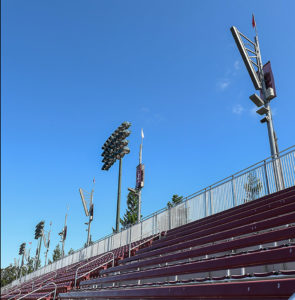 Early summer, the systems Meyer Sound, based on column speakers (LIME), were installed at Stanford Stadium, with the capacity to 50.000 people, the Avery Aquatic Center and boyd and Jill Smith Family Stadium, playing field for the school's softball team.
Early summer, the systems Meyer Sound, based on column speakers (LIME), were installed at Stanford Stadium, with the capacity to 50.000 people, the Avery Aquatic Center and boyd and Jill Smith Family Stadium, playing field for the school's softball team.
Stanford Stadium and the Avery Aquatic Center were designed and equipped by Diversified, a global provider of technology solutions.
Meyer Sound's design services collaborated with the consultancy WJHW during the design phase for all facilities, providing supervision and guidance in the systems of football stadiums and aquatic centres.
El Stanford Stadium, home of the Cardinal football team, was built in the years 20 as a gigantic enclosure with capacity for more than 89.000 Spectators. in 2006 would be rebuilt as a two-story stadium to offer a closer experience to fans.
The system installed after reconstruction, based on conventional speakers, became obsolete and had obvious acoustic limitations.
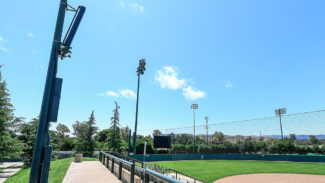 This year an update of the equipment was made and for its renewal, the design team decided to use the latest digital sound beamforming technology built into meyer Sound self-powered column speakers.
This year an update of the equipment was made and for its renewal, the design team decided to use the latest digital sound beamforming technology built into meyer Sound self-powered column speakers.
A total of 80 Column speakers were installed in the stadium, using all three models in the series: LIME 96 (with 96 individually processed and amplified speakers), as well as smaller CAL models 64 and CAL 32.
“The beam direction technology allows us to place a speaker in such a way that without it an optimal vertical location would not be possible. Horizontally it needs to be placed in the right place, but in the vertical dimension the beam steering can be used to successfully cover the plane of the seats in a way that would not be possible with other methods”, says Peter O'Neil, Director of Engineering at Diversified.
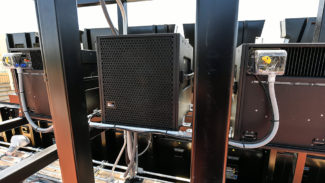 Coverage pattern control avoids the problems often found in large stadium sound systems, explains Mark Graham, Associate Director of WJHW.
Coverage pattern control avoids the problems often found in large stadium sound systems, explains Mark Graham, Associate Director of WJHW.
“A problem with distributed systems, when using long-range speakers, It's just, if you do not have vertical control of the Meyer column systems, you can have sound from one side of the stadium filtering to the other side. And if it's strong enough, degrade the intelligibility of the spoken word. But with CALs and their narrow vertical pattern you can control exactly what areas each speaker will cover and prevent that problem.”.
Graham also notes that the thin profile of the column speakers allows for discreet coverage of the problem areas of the upper decks., between lighting structures.
“With conventional solutions in those areas you can have horrible problems.. But with these column systems, we just add a small pole, which is quite cheap and discreet from an architectural point of view, and you can direct the sound towards that area”.
Although they have a thin profile, column speakers offer great power. According to Meyer Sound's Director of Business Development, John Monitto, “in addition to distributing the sound in a uniform and well-controlled way, CALs also offer very high peak performance to deliver optimal intelligibility above crowd noise”.
Despite sophisticated digital technology, O'Neil is confident in the long-term reliability of the system. "It's a proven solution with a working base in other outdoor stadiums., including Berkeley Memorial Stadium, that has been in use for several years. Resists the elements and also football matches where all the power is needed”.
To cover seating areas where a column speaker solution was not appropriate, the Stanford Stadium system also incorporates 84 UPJunior speakers and ten UP-4XP.
Near the Avery Aquatic Center, two CAL speakers 96 and a CAL speaker 64 are centered on the marker, providing a point source solution for grandstands capable of 2.480 Spectators.
Filler systems comprise nine MM-4XP speakers and two UPJ-1XP. For events, such as synchronized swimming, that require high-fidelity music and full bandwidth, the system provides deep bass through three 750-CFL subwoofers deployed in a cardioid configuration.
Boyd and Jill Smith Family Stadium
For its part, at Boyd and Jill Smith Family Stadium, with a scalable capacity of 1.500 to 3.500 people, two CALS have been installed 64 along with four UPJunior-XP speakers.
“Another great advantage of a CAL solution is that it provides flexibility to handle spaces expandable in capacity.”, says Monitto. “If you need to redistribute the sound, another preset can be simply programmed to steer it towards a tighter or wider coverage pattern that suits the new seating configuration”.
Another factor favoring a comprehensive Meyer Sound solution was the proven longevity of the product.. “Several of the outdoor facilities here had installed MSL-3 systems more than 25 years and still working well", continues Monitto.
Future phases of the facility upgrade program will include new Meyer Sound systems for Laird Q Stadium. Cagan at Maloney Field (football and lacrosse) and Klein Field at Sunken Diamond (baseball).
You liked this article?
Subscribe to our RSS feed And you won't miss anything.



